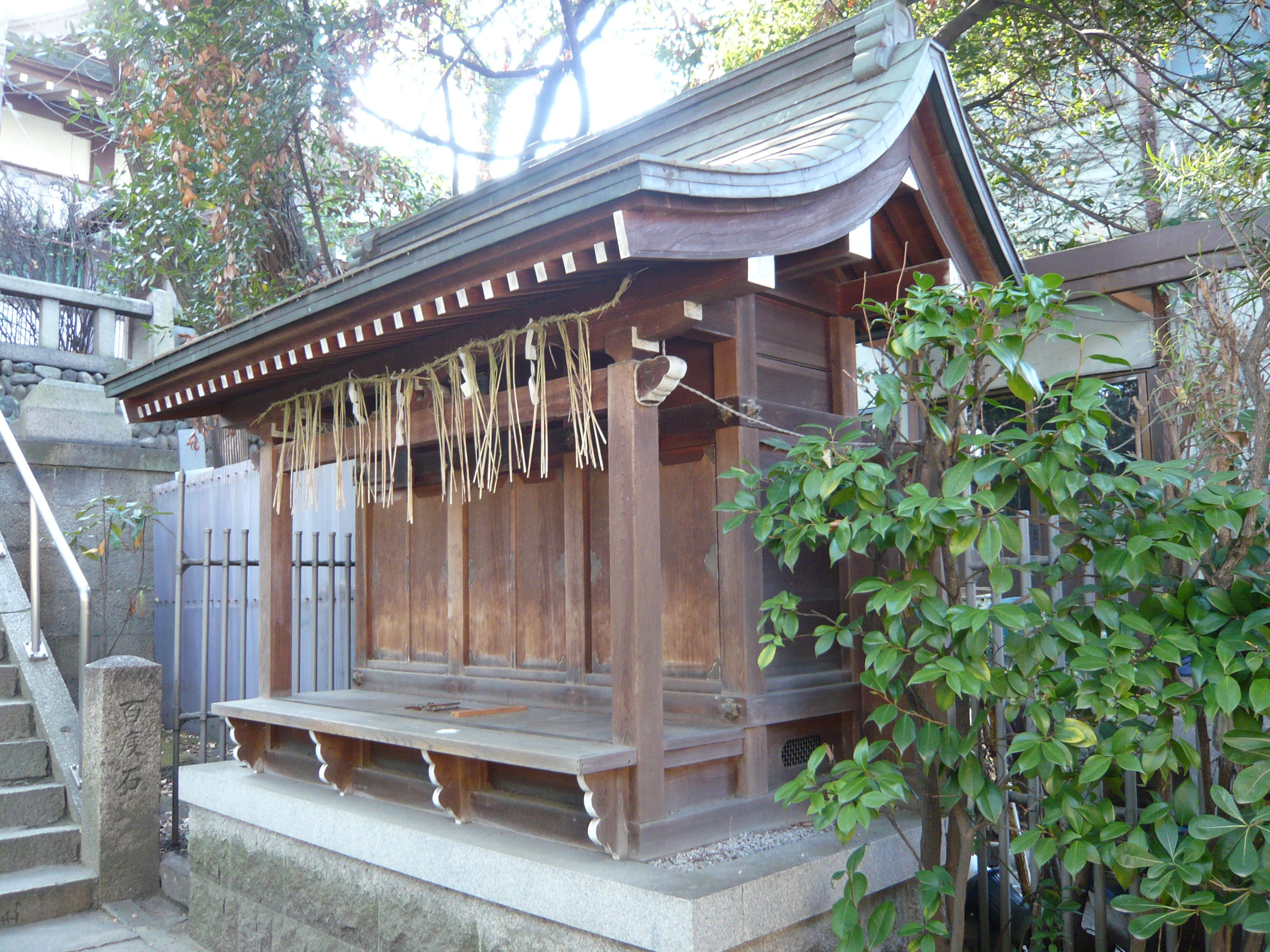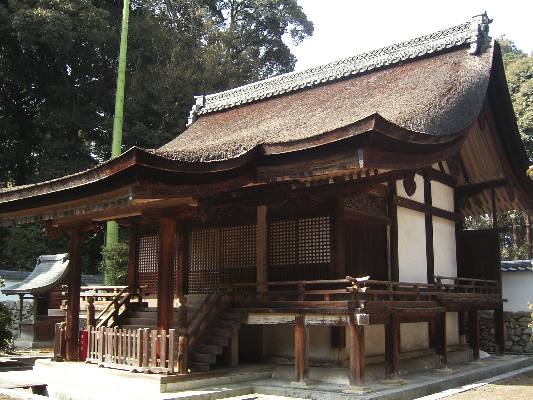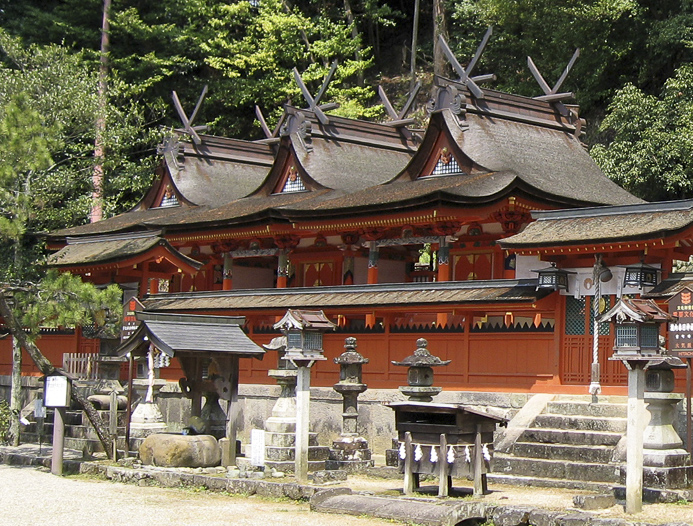|
Sessha
and , also called Iwanami Japanese dictionary, 6th Edition (2008), DVD version. (collectively known as The term ''setsumatsusha'' is the combination of the two terms ''sessha'' and ''massha''.) are small or miniature shrines entrusted to the care of a larger shrine, generally due to some deep connection with the enshrined ''kami''. The two terms used to have legally different meanings, but are today synonyms. ''Setsumatsusha'' can lie either or the main shrine's premises. ''Setsumatsusha'' are usually 1x1 '' ken'' in size. They can however be as small as beehives or relatively large and have 1x2, 1x3 or even, in one case, 1x7 bays. History The practice of building ''sessha'' and ''massha'' shrines within a ''jinja'' predates written history. The earliest ''setsumatsusha'' usually had some strong connection to the history of the area or the family of the enshrined ''kami''. During the Heian period, Ise Shrine used to make a distinction between the two types based on whether ... [...More Info...] [...Related Items...] OR: [Wikipedia] [Google] [Baidu] |
Shinto Architecture
Some examples of Shinto architecture Shinto architecture is the architecture of Japanese Shinto shrines. With a few exceptions like Ise Grand Shrine and Izumo Taisha, Shinto shrines before Buddhism were mostly temporary structures erected to a particular purpose. Buddhism brought to Japan the idea of permanent shrines and the presence of verandas, Tōrō, stone lanterns, and elaborate gates are some which are used both in a Shinto shrine and a Buddhist temple. The composition of a Shinto shrine is extremely variable, and none of its possible features are necessarily present. Even the or sanctuary, the part which houses the and which is the centerpiece of a shrine, can be missing. However, since its grounds are sacred, they usually are surrounded by a fence made of stone or wood called , while access is made possible by an approach called . The entrances themselves are straddled by gates called , which are therefore the simplest way to identify a Shinto shrine. A shrine ma ... [...More Info...] [...Related Items...] OR: [Wikipedia] [Google] [Baidu] |
Ise Shrine
The , located in Ise, Mie Prefecture of Japan, is a Shinto shrine dedicated to the solar goddess Amaterasu Ōmikami and the grain goddess Toyouke-hime (Toyouke Omikami). Also known simply as , Ise Shrine is a shrine complex composed of many Shinto shrines centered on two main shrines, and . The Inner Shrine, Naikū (also officially known as "Kōtai Jingū"), is dedicated to the worship of Amaterasu and is located in the town of Uji-tachi, south of central Ise, where she is believed to dwell. The shrine buildings are made of solid cypress wood and use no nails but instead joined wood. The Outer Shrine, ''Gekū'' (also officially known as "Toyouke Daijingū"), is located about six kilometers from Naikū and dedicated to Toyouke-Ōmikami, the god of agriculture, rice harvest and industry. Besides Naikū and Gekū, there are an additional 123 Shinto shrines in Ise City and the surrounding areas, 91 of them connected to Naikū and 32 to Gekū. Purportedly the home of the Sacred M ... [...More Info...] [...Related Items...] OR: [Wikipedia] [Google] [Baidu] |
Hirairi
is a Japanese traditional architectural structure, where the building has its main entrance on the side which runs parallel to the roof's ridge (non gabled-side). The ''shinmei-zukuri'', '' nagare-zukuri'', '' hachiman-zukuri'', and '' hie-zukuri'' Shinto architectural styles belong to this type. It survives mostly in religious settings. In residential buildings, the entrance side is usually the long one, but from the Edo period The , also known as the , is the period between 1600 or 1603 and 1868 in the history of Japan, when the country was under the rule of the Tokugawa shogunate and some 300 regional ''daimyo'', or feudal lords. Emerging from the chaos of the Sengok ... onward the opposite became more frequent. References {{Authority control Shinto shrines Architecture in Japan ... [...More Info...] [...Related Items...] OR: [Wikipedia] [Google] [Baidu] |
Iwa Jinja 11
IWA or Iwa may refer to: Organizations International * Institute of World Affairs * International Water Association * International Webmasters Association * International Woodworkers of America, United States and Canada * International Workers Association, an anarcho-syndicalist federation of labour unions * International Workingmen's Association (1864–1876), also known as the First International United Kingdom * Indian Workers' Association * Inland Waterways Association, a canal charity * Institute of Welsh Affairs, a policy think-tank Elsewhere * Independent Wrestling Association Mid-South, United States * International Wrestling Alliance, Canada * International Wrestling Association (other), various national bodies * Irish Wheelchair Association, Ireland People * Princess Iwa (died 347), Japanese princess and empress consort of Emperor of Japan Nintoku * Iwa Koesoemasoemantri (1899–1971), Indonesian politician * Iwa K, Indonesian rapper, singer, songwrite ... [...More Info...] [...Related Items...] OR: [Wikipedia] [Google] [Baidu] |
Meiji Period
The was an era of Japanese history that extended from October 23, 1868, to July 30, 1912. The Meiji era was the first half of the Empire of Japan, when the Japanese people moved from being an isolated feudal society at risk of colonization by Western powers to the new paradigm of a modern, industrialized nation state and emergent great power, influenced by Western scientific, technological, philosophical, political, legal, and aesthetic ideas. As a result of such wholesale adoption of radically different ideas, the changes to Japan were profound, and affected its social structure, internal politics, economy, military, and foreign relations. The period corresponded to the reign of Emperor Meiji. It was preceded by the Keiō era and was succeeded by the Taishō era, upon the accession of Emperor Taishō. The rapid modernization during the Meiji era was not without its opponents, as the rapid changes to society caused many disaffected traditionalists from the former samu ... [...More Info...] [...Related Items...] OR: [Wikipedia] [Google] [Baidu] |
Kasuga-zukuri
is a traditional Shinto shrine architectural style which takes its name from Kasuga Taisha's ''honden''. Description It is characterized by the use of a building just 1x1 '' ken'' in size with the entrance on the gabled end covered by a veranda.A ''ken'' is the distance between one supporting pillar and another, a quantity which can vary from shrine to shrine and even within the same building, as in this case. In Kasuga Taisha's case, the ''honden'' is just 1.9 m x 2.6 m.JAANUSKasuga-zukuri accessed on December 1, 2009 Supporting structures are painted vermilion, while the plank walls are white. It has a structure, that is, the building has its main entrance on the gabled side. The roof is gabled (), decorated with purely ornamental poles called '' chigi'' (vertical) or ''katsuogi'' (horizontal), and covered with cypress bark. After the '' nagare-zukuri'' style, this is the most common Shinto shrine style. While the first is common all over Japan, however, shrines with a ''ka ... [...More Info...] [...Related Items...] OR: [Wikipedia] [Google] [Baidu] |
Nagare-zukuri
The or is a traditional Shinto shrine architectural style characterized by a very asymmetrical gabled roof () projecting outwards on one of the non-gabled sides, above the main entrance, to form a portico (see photo).History and Typology of Shrine Architecture Encyclopedia of Shinto accessed on November 2009 This is the feature which gives it its name. It is the most common style among shrines all over the country. That the building has its main entrance on the side which runs parallel to the roof's ridge (non gabled-side) makes it belong to the style. Design Sometimes its basic layout, consisting of an elevated partially surrounded by a veranda called '' hisashi ...[...More Info...] [...Related Items...] OR: [Wikipedia] [Google] [Baidu] |
Tsumairi
is a Japanese traditional architectural structure where the building has its main entrance on one or both of the . The '' kasuga-zukuri'', '' taisha-zukuri'', and '' sumiyoshi-zukuri'' Shinto architectural styles all belong to this type. References {{Authority control Shinto shrines Architecture in Japan ja:切妻造#平入り・妻入り ... [...More Info...] [...Related Items...] OR: [Wikipedia] [Google] [Baidu] |
Modern System Of Ranked Shinto Shrines
Modern may refer to: History *Modern history ** Early Modern period ** Late Modern period *** 18th century *** 19th century *** 20th century ** Contemporary history * Moderns, a faction of Freemasonry that existed in the 18th century Philosophy and sociology * Modernity, a loosely defined concept delineating a number of societal, economic and ideological features that contrast with "pre-modern" times or societies ** Late modernity Art * Modernism ** Modernist poetry * Modern art, a form of art * Modern dance, a dance form developed in the early 20th century * Modern architecture, a broad movement and period in architectural history ** Moderne, multiple architectural styles ** Modernisme a.k.a. Catalan Modernism * Modern music (other) Geography * Modra, a Slovak city, referred to in the German language as "Modern" Typography * Modern (typeface), a raster font packaged with Windows XP * Another name for the typeface classification known as Didone (typography) ... [...More Info...] [...Related Items...] OR: [Wikipedia] [Google] [Baidu] |
Second World War
World War II or the Second World War (1 September 1939 – 2 September 1945) was a World war, global conflict between two coalitions: the Allies of World War II, Allies and the Axis powers. World War II by country, Nearly all of the world's countries participated, with many nations mobilising all resources in pursuit of total war. Tanks in World War II, Tanks and Air warfare of World War II, aircraft played major roles, enabling the strategic bombing of cities and delivery of the Atomic bombings of Hiroshima and Nagasaki, first and only nuclear weapons ever used in war. World War II is the List of wars by death toll, deadliest conflict in history, causing World War II casualties, the death of 70 to 85 million people, more than half of whom were civilians. Millions died in genocides, including the Holocaust, and by massacres, starvation, and disease. After the Allied victory, Allied-occupied Germany, Germany, Allied-occupied Austria, Austria, Occupation of Japan, Japan, a ... [...More Info...] [...Related Items...] OR: [Wikipedia] [Google] [Baidu] |






